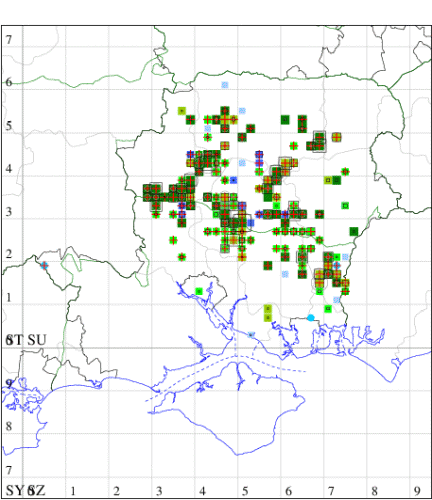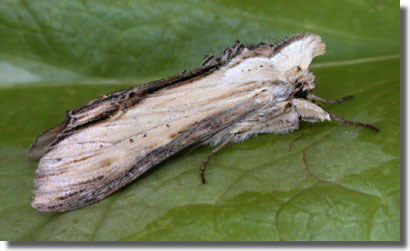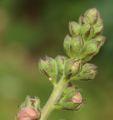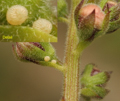Striped Lychnis
Cucullia lychnitis
Checklist Number73.057 [B&F: 2219]
Verification
Record will normally be accepted but photo evidence may be required - check with CMR if not sure of identity
Classification
| Family: | Noctuidae |
| Subfamily: | Cuculliinae |
| Genus: | Cucullia |
| Species: | lychnitis |
| Authority: | Rambur, 1833 |
Nationally scarce (Na) and a priority species under the UK Biodiversity Action Plan, on calcareous grassland and roadside verges. Found throughout much of the chalk outcrop of central Hampshire, extending from the South Downs of West Sussex virtually to the border with Wiltshire. It is also breeding in Oxfordshire, Berkshire and in small scattered sites over a wide area in south Buckinghamshire. Hampshire is an important national stronghold for the species, and in 2000 the moth was discovered to have colonised the recently re-seeded extension of the Magdalen Hill Down Reserve near Winchester. Not recorded from the Isle of Wight to date. Wingspan 42-46 mm. The most likely confusion species are Mullein S. verbasci, which is usually larger and brown-tinged, with a clearly defined discal spot on the underside of the hindwing, whereas Striped Lychnis is grey-tinged and does not hindwing underside dot, and Water Betony S. scrophulariae, from which reliably separable only by reference to the genitalia. Larva feeds on flowers of Dark Mullein, over-wintering as a pupa.


The abundance in each month is indicated as follows:
 No records
No records Very occasional
Very occasional Irregular
Irregular Uncommon
Uncommon Off-peak, but not unusual
Off-peak, but not unusual Off-peak, but not unusual
Off-peak, but not unusual Main flight time
Main flight time| J | F | M | A | M | J | J | A | S | O | N | D | |
|---|---|---|---|---|---|---|---|---|---|---|---|---|
| Adult |  |  |  |  |  |  |  |  |  |  |  |  |
| Larval |  |  |  |  |  |  |  |  |  |  |  |  |














